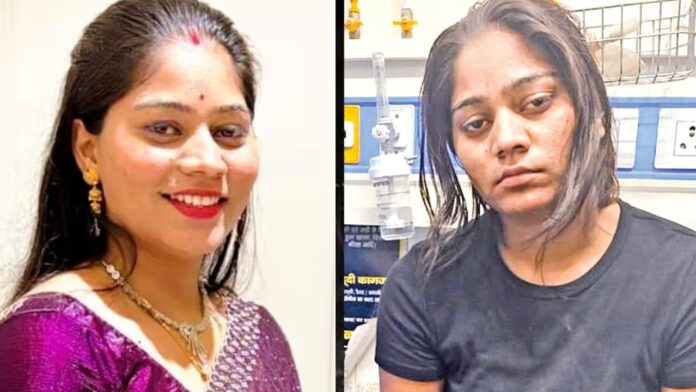Until a court of law proves Sonam Raghuvanshi guilty, it is unjust to label her a criminal or cast aspersions on her womanhood. It is possible that she murdered her husband, Raja Raghuvanshi — but it is equally possible that she did not. This one decision, made under social pressure, destroyed three lives: Raja, who lost his life; and Sonam and Raj Kushwaha, whose lives — along with those of their families — were irreparably damaged.
Personally, I never place blind faith in police theories. Police investigations are often shaped by the need to preserve their public image. To do so, they may distort the nature of incidents that threaten their credibility. As a result, real events often become secondary to manipulated narratives. Tragically, it is these altered narratives that form the basis of courtroom arguments, leading to the accused being acquitted in many cases. This, our society calls justice.
Raghuvanshi Raja — who lost his life is riddled with questions that raise doubts: Did Sonam truly conspire to kill her husband? In her wedding photographs, she’s smiling freely, dancing with Raja. There’s no visible pain — none of the forced smiles that usually reveal inner turmoil. A fake smile is easy to detect unless one is an extraordinary actor.
Even now, my mind only accepts the theory of her guilt under great pressure. Left to itself, it resists the idea that she killed her husband — especially one to whom she pledged lifelong companionship just two weeks earlier. Sonam is a young woman, about 25 or 26 — a complete woman in every sense. And a woman — by nature — not take life. She creates, she does not destroy. That is an eternal truth. When a woman acts against this fundamental nature — even if it’s labeled a crime — there is usually a deeply personal reason, one that rarely comes to public light.
And yet, under the weight of circumstances, I accept that Sonam may have played a role in Raja’s murder. I even concede to the police’s claim that a man named Raj Kushwaha was her lover, and that the two plotted to eliminate Raja, who came in the way of their love. But if someone, whether man or woman, is willing to commit murder to reclaim their lover, then it calls into question the very foundation of our society.
In today’s digital age, love rarely remains hidden. Parents often sense their children’s emotions. But our patriarchal society — more accurately, anti-woman society — continues to view love as immoral, improper, and even illegal. It refuses to accept or recognize it. Love is the axis of life, and yet, tradition-bound society views it with contempt.
Sonam’s father, a businessman, may have discovered her love affair — and it may have upset him, especially since the man she loved was a servant. In India, servants are often treated with disdain. No one considers them equals. So, if a wealthy man’s daughter falls for a servant, her “crime” is multiplied. Marrying a servant would invite ridicule. Thus, the very idea of marrying his daughter to her lover was unacceptable.
If Sonam was indeed involved in Raja’s murder, her father and those who forced the marriage are also responsible. Forcing a woman to marry someone she doesn’t love — or a man to marry a woman who loves someone else — is deception. It is a social crime. If Sonam loved someone else — even if he was a servant — why was she forced to marry Raja?
This one decision, made under social pressure, destroyed three lives: Raja, who lost his life; and Sonam and Raj Kushwaha, whose lives — along with those of their families — were irreparably damaged. These questions must be asked of Sonam’s father.
If these truths remain unexplored, and Sonam and Raj are tried and punished solely based on police claims, true justice will not be served. And until true justice prevails in our society, such tragedies will keep repeating. Because the attraction between man and woman is natural — it cannot be suppressed in the name of tradition. Love will continue, regardless of how many restrictions are imposed upon it.
I recently visited Europe. There too, Indian communities exist. Some are immigrants, others are descendants of indentured laborers who once migrated to Suriname and now live in the Netherlands. In their societies, arranged marriages do happen — but the children choose their own partners. The role of the family is limited to facilitating the marriage. This is a tradition that parents against love marriages should accept.
If Sonam really participated in Raja’s murder, the root cause may well be her forced marriage. She could never mentally accept the relationship. When Raj suggested removing Raja from their lives, she may have agreed without hesitation. The marriage had disturbed her psyche, planting seeds of hatred instead of affection. What kind of marriage breeds hatred, not joy?
This is why many young Indians today are turning away from the institution of marriage. Because it’s no longer a source of companionship — but a breeding ground for coercion, conflict, and collapse.
Harigovind Vishwakarma
Share this content:





